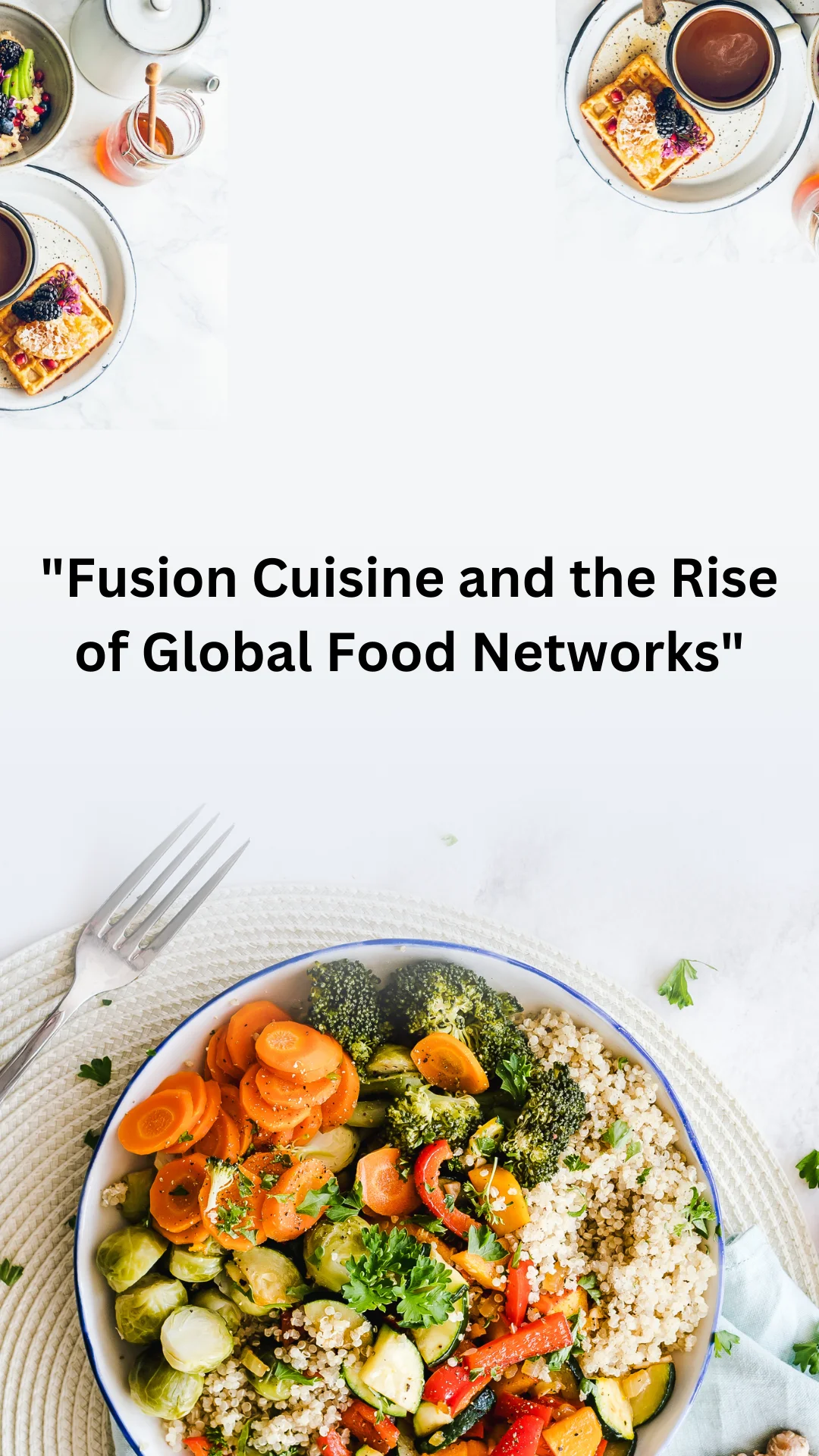Fusion cuisine, characterized by its innovative blending of diverse culinary traditions, reflects a broader trend in global food culture: the rise of global food networks. These networks—encompassing the exchange of ingredients, techniques, and culinary ideas across borders—have significantly influenced the development and popularization of fusion cuisine. This article explores how global food networks have contributed to the evolution of fusion cuisine, highlighting the interconnectedness of culinary traditions and the dynamic nature of contemporary gastronomy.
Understanding Global Food Networks
Global food networks refer to the intricate web of interactions and exchanges that connect chefs, food producers, consumers, and culinary traditions across the world. These networks facilitate the flow of ingredients, cooking techniques, and culinary ideas, creating a rich tapestry of global gastronomy. The rise of global food networks has been driven by several factors, including technological advancements, increased international travel, and the growing influence of digital media.
The Impact of Global Food Networks on Fusion Cuisine
- Cross-Cultural Ingredient Exchange
Global food networks have made it easier for chefs to access and experiment with ingredients from different culinary traditions. The availability of exotic spices, rare fruits, and unique grains from around the world has inspired the creation of fusion dishes that blend these ingredients in novel ways. For example, the incorporation of Japanese miso into traditional French sauces or the use of South American quinoa in Mediterranean salads illustrates how cross-cultural ingredient exchange can lead to exciting culinary innovations.
- Shared Techniques and Innovations
The exchange of cooking techniques and innovations is another key aspect of global food networks. Chefs from different regions often share and adapt techniques, leading to the development of new cooking methods and styles. The use of molecular gastronomy, for example, has become widespread due to the global sharing of culinary research and techniques. This innovation has allowed fusion cuisine to incorporate elements such as foams, gels, and deconstructed dishes, creating visually stunning and texturally diverse culinary experiences.
- Influence of Digital Media and Food Culture
Digital media has played a significant role in shaping global food networks by providing a platform for the sharing of recipes, cooking techniques, and food trends. Social media platforms like Instagram, YouTube, and food blogs have become influential in promoting fusion cuisine, allowing chefs to showcase their creative dishes and connect with a global audience. This visibility has led to the rapid spread of fusion food trends and inspired chefs around the world to experiment with new combinations and ideas.
- Culinary Tourism and Global Palates
Culinary tourism—the practice of traveling specifically to experience food and dining cultures—has contributed to the rise of global food networks. As travelers seek out authentic and unique dining experiences, they often encounter and embrace fusion cuisine. The blending of local and international culinary traditions observed in global food hubs, such as New York City, Tokyo, and Barcelona, reflects the diverse palates of global travelers and their influence on contemporary fusion dishes.
Notable Examples of Fusion Cuisine Influenced by Global Food Networks
- Korean BBQ Tacos: This popular fusion dish combines the flavors of Korean barbecue with the format of Mexican tacos. The blending of marinated beef, kimchi, and spicy sauces in a taco shell reflects the influence of global food networks in bringing together diverse culinary traditions.
- Sushi Burritos: The sushi burrito merges Japanese sushi with the convenience of a burrito, creating a portable and satisfying fusion dish. This innovation highlights how global food networks have facilitated the blending of culinary elements from different cultures to create new dining experiences.
- Tandoori Chicken Pizza: Combining Indian spices with Italian pizza, this dish exemplifies how global food networks have influenced fusion cuisine by integrating bold flavors from one tradition into the classic format of another.
- Poke Bowls: Originally from Hawaii, poke bowls have incorporated elements from various culinary traditions, including Asian, Latin American, and Mediterranean influences. The global popularity of poke bowls demonstrates how fusion cuisine can adapt and evolve through the exchange of culinary ideas and ingredients.
Challenges and Considerations
- Cultural Sensitivity and Authenticity: As fusion cuisine continues to evolve, it is important to approach it with cultural sensitivity. Ensuring that fusion dishes respect and honor the origins of the ingredients and techniques used is crucial in avoiding cultural appropriation and maintaining authenticity.
- Balancing Innovation with Tradition: While innovation is a key aspect of fusion cuisine, it is important to balance creativity with respect for traditional culinary practices. Successful fusion dishes should enhance rather than overshadow the essence of the original cuisines involved.
- Sustainability and Ethical Sourcing: Global food networks also bring attention to issues of sustainability and ethical sourcing. As fusion cuisine relies on diverse ingredients from around the world, it is important to consider the environmental and social impact of sourcing practices and prioritize sustainable and ethical approaches.
Conclusion
The rise of global food networks has had a profound impact on the development and popularization of fusion cuisine. By facilitating the exchange of ingredients, techniques, and culinary ideas across borders, these networks have enabled chefs to create innovative dishes that blend diverse culinary traditions. As fusion cuisine continues to evolve, it will reflect the dynamic and interconnected nature of global gastronomy, celebrating the richness and diversity of culinary cultures from around the world. The influence of global food networks will undoubtedly continue to shape the future of fusion cuisine, inspiring new and exciting culinary experiences for years to come.
